Interested in getting even more value out of your blog posts, we have something which can help with that…
Introducing our latest blog post on how you can make social media content based on your blog post content, helping you to ensure a consistent brand voice and style.
Sound good? Then get reading!
Top Tips
- To follow this blog post successfully, you will need to have a WordPress website and ensure that you have the Yoast plugin installed.
Benefits
You can get even more out of your blog posts, by expanding on the original content, and using it as inspiration for content that you can distribute through your socials!
By using this technique, you are able to ensure that the content that you post on social media is consistent with the brand voice you’ve worked hard to develop.
Getting Started
Throughout this stage of the blog post, we are going to outline to you how you can successfully construct content for social media purposes based off of blog content you have posted.
So, first things first, you are going to need to choose one of the blog posts you’ve written which you would like to use as an inspiration across social media.
Okay, so to begin with, lets begin by creating a minimum of 3 social media posts for different platforms.
Here we’ve outlined 4 key methods you could use when using your blog posts as inspiration for your social media content.
- Headline – this is an important resource which you can use for the social media post, however, we’re not saying to just use the headline for the post – use it is as the inspiration – make a point about it.
- Blog Segment – here you could take a bit of the blog post text, although it needs to be something which will grab people’s attention and make them want to engage with your post.
- Query – look through your blog post and see if there are any interesting queries that you can come up with based on the content.
- Key Facts – now you will need to highlight any key information that is in your blog – something which can stand out and make people want to know more.
Once you have this content in mind, now you need to turn your attention over to the downloadable template.
Okay so that you can get everything up and running, you will need to follow these steps:
- Re-name the first worksheet after the title of your selected blog.
- Input the title of your blog as well as the link, and also outline all of the platforms which you are intending to post this on.
- Go through and make sure to populate it with the content you have written for the social media posts that you’ve already built up and created.
Visual Imagery For Social Media
Now you’re at the stage where you have successfully written content for your social media posts, now you need to look beyond the copy and into the available visual content.
Canva can be a great tool to use for creating visual content for social media purposes, meaning that you can have a brand-personal.
You are able to choose from a range of templates (whether they be ones already supplied by the site, or custom ones you’ve created and used in the past).
By using this resource, you are able to introduce your own photos into the template, so that you can include some additional text or visual assets.
Once you have selected the relevant template, you will still be able to see the following in a sidebar on the left side of your screen:
- Templates
By clicking on this option, you will be able to choose options labelled “For you” or other graphics which are bespoke amongst different areas of industries/niches.
- Uploads
Here you are able to add your own imagery into Canva templates, that way you are effectively able to brand your imagery or add text wherever needed.
- Photos
Within this section, you are able to see the images that you “Recently Used” as well as those which are currently considered “Trending” and then insert them into your own template.
- Elements
There are a lot of icons available which you could use as well as different shapes and lines you can use (amongst a few other things).
- Text
When it comes to Text, you will have the ability to change the font style and sizing of the content on your posts to reflect the style and branding of your business.
This is important when ensuring that you have a consistent brand image and style across your social media presence.
- Styles
With the styling abilities, you can affect the style of different headings, font styles and colour shades that you use.
- Music
Any visual music that you’d like to use.
- Videos
There are a series of videos that you are able to choose from to find something which suits the requirements of your social media visual.
- Background
To add a brand unique background, then this would be the option that you need to use to effectively style your design.
- Folders
If you have different folders in place – i.e. you handle the social media accounts for multiple businesses, then you’ll just need to select the relevant folder.
Moving Assets
You will be able to move different assets around the template that you have set up.
Once you have gone through and created a template which you are happy with – i.e. a sizing that is suitable for the correct platform, then now is the time to download the visual that you have created.
By ensuring that you have a downloaded version of the template, you will be able to use it when you are scheduling posts on your social media scheduling platform.
Social Media Cards Verification
As you are successfully at the point where you have written content and visual imagery at the ready for your social media posts.
This means that you will now need to go through the verification process for how your post will appear when it is shared by others on social media.
Here is how you are able to test Facebook cards:
This is the link you’ll need: https://developers.facebook.com/tools/debug/
- You will need to input the URL of your blog into the relevant field and then hit the “debug” button.
- It is important that you acknowledge the appearance of your social media post.
In the event that you find some issues, then you will have to go through the process of repairing the issues, and here we have outlined the steps you need to be aware of:
- Go to your WordPress dashboard, select “Posts” and then the relevant blog post you chose previously.
- You will need to go to the bottom of the blog, you will be able to view this plugin: Yoast SEO.
- Make sure that you have clicked on the button for social media – this will allow you to edit how it appears across different platforms.
- You’re going to need to go through and check how it appears across different profiles.
- Once you have populated the relevant fields, you are going to need to select the visual imagery you chose previously.
- Make sure that you have successfully completed it all by updating the blog post content, that way all the changes that you have just made will be saved.
- Now that you have gone through those pages, you are going to need to go back through to the Facebook testing website so that you are able to once again see how the social media post will appear.
Here are the steps that you’re going to need to test Twitter cards:
Here is the link to the tool you’re going to need
- Now you are going to need to input the link to your blog in the relevant field and then hit the “preview card” button.
If you find that there are some issues with how the Twitter post looks in preview, then here are the steps you need to go through:
- Go to your WordPress dashboard, select “Posts” and then the relevant blog post you chose previously.
- You will need to go to the bottom of the blog, you will be able to view this plugin: Yoast SEO, and then find the “Twitter” button once you have selected this button: “social”
- After you have gone through and inputted the relevant title and description for your Twitter account, go through and choose the image for Twitter that you have put into the template you’ve been working on.
- Make sure that you have successfully completed it all by updating the blog post content, that way all the changes that you have just made will be saved.
Finally, you will need to go back to the Twitter tool link above and check how the card appears once again to make sure it is presented correctly.
Post Content Distribution
You’re going to need to go through the process of post distribution using your preferred content scheduling system – ensure that the one that you are using has been correctly set up with all of the relevant accounts so that the posts go out correctly.
Once you have gotten this all set up and your posts scheduled in, then you are all done and dusted!
Thanks for reading!
We hope you found this blog useful, if you did, then make sure to check us out on social media so you can keep updated with our latest news and events.


